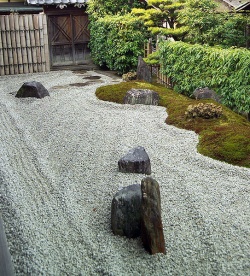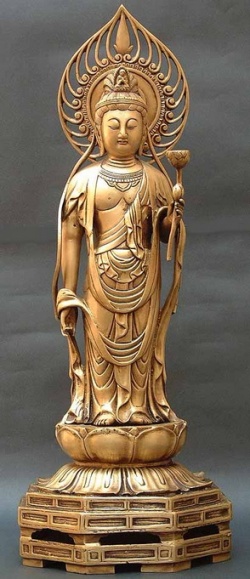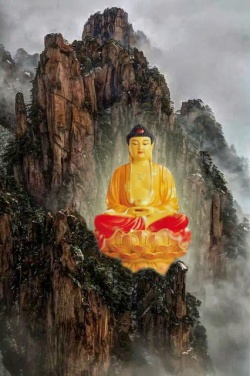Difference between revisions of "Jetuvana Sayadaw’s"
(Created page with " <poem> U Nārada (Burmese: နာရဒ; 1868–1955), also Mingun Jetawun Sayādaw or Mingun Jetavana Sayādaw, was a Burmese monk in the Theravada t...") |
|||
| Line 1: | Line 1: | ||
| + | <nomobile>{{DisplayImages|3621|1027|4206}}</nomobile> | ||
| + | |||
| + | |||
| Line 12: | Line 15: | ||
[[Nyanaponika Thera]], himself a [[student]] of [[Mahasi Sayadaw]], describes the manner in which [[U Nārada]] developed the [[New Burmese Method]]: | [[Nyanaponika Thera]], himself a [[student]] of [[Mahasi Sayadaw]], describes the manner in which [[U Nārada]] developed the [[New Burmese Method]]: | ||
| − | It was at the beginning of this century that a [[Burmese | + | It was at the beginning of this century that a [[Burmese monk]], [[U Nārada]] by [[name]], bent on actual [[realization]] of the teachings he had learnt, was eagerly searching for a system of [[meditation]] [[offering]] a direct access to the [[Highest]] Goal, without encumbrance by accessories. |
| + | |||
| + | Wandering through the country, he met many who were given to strict [[meditative practice]], but he could not obtain guidance satisfactory to him. | ||
| + | |||
| + | In the course of his quest, coming to the famous meditation-caves in the hills of [[Sagaing]] in Upper [[Burma]], he met a [[monk]] who was reputed to have entered upon those lofty [[Paths of Sanctitude]] ([[ariya-magga]]) where the final [[achievement]] of [[Liberation]] is assured. | ||
| + | |||
| + | When the [[Venerable]] [[U Narnda]] put his question to him, he was asked in return: 'Why are you searching outside of the [[Master's]] [[word]]? Has not the Only Way, [[Satipaṭṭhāna]], been proclaimed by Him?' | ||
| + | |||
| + | |||
| + | [[U Nārada]] took up this indication. | ||
| + | |||
| + | Studying again the text and its [[traditional]] [[exposition]], {{Wiki|reflecting}} deeply on it, and entering energetically upon its practice, he finally came to understand its salient features. | ||
| + | |||
| + | The results achieved in his [[own]] practice convinced him that he had found what he was searching for: a clear-cut and effective method of [[training the mind]] for [[highest realization]]. | ||
| + | |||
| + | |||
| + | From his [[own]] [[experience]] he developed the {{Wiki|principles}} and the details of the practice which formed the basis for those who followed him as his direct or indirect [[disciples]]. | ||
| − | + | In order to give a [[name]] to the [[Venerable]] [[U Narada's]] method of {{Wiki|training}} in which the {{Wiki|principles}} of [[Sattipatṭṭhāna]] are applied in such a definite and radical way, we propose to call it here the [[Burmese]] [[Sattipatṭṭhāna Method]]; not in the [[sense]] that it was a [[Burmese]] invention but because it was in [[Burma]] that the practice of that [[ancient]] Way had been so ably and energetically revived. | |
</poem> | </poem> | ||
{{R}} | {{R}} | ||
{{W}} | {{W}} | ||
[[Category:History of Sangha]] | [[Category:History of Sangha]] | ||
Revision as of 02:26, 13 November 2015
U Nārada (Burmese: နာရဒ; 1868–1955), also Mingun Jetawun Sayādaw or Mingun Jetavana Sayādaw, was a Burmese monk in the Theravada tradition credited with being one of the key figures in the revival of Vipassana meditation.[1]
His prominent students, particularly Mahasi Sayadaw, helped popularize what is now known as the "New Burmese Method" or the "Mahasi method." Sayadaw is a Burmese term of respect when addressing major Buddhist monks and means "great master".
Creation of the New Burmese method
Nyanaponika Thera, himself a student of Mahasi Sayadaw, describes the manner in which U Nārada developed the New Burmese Method:
It was at the beginning of this century that a Burmese monk, U Nārada by name, bent on actual realization of the teachings he had learnt, was eagerly searching for a system of meditation offering a direct access to the Highest Goal, without encumbrance by accessories.
Wandering through the country, he met many who were given to strict meditative practice, but he could not obtain guidance satisfactory to him.
In the course of his quest, coming to the famous meditation-caves in the hills of Sagaing in Upper Burma, he met a monk who was reputed to have entered upon those lofty Paths of Sanctitude (ariya-magga) where the final achievement of Liberation is assured.
When the Venerable U Narnda put his question to him, he was asked in return: 'Why are you searching outside of the Master's word? Has not the Only Way, Satipaṭṭhāna, been proclaimed by Him?'
U Nārada took up this indication.
Studying again the text and its traditional exposition, reflecting deeply on it, and entering energetically upon its practice, he finally came to understand its salient features.
The results achieved in his own practice convinced him that he had found what he was searching for: a clear-cut and effective method of training the mind for highest realization.
From his own experience he developed the principles and the details of the practice which formed the basis for those who followed him as his direct or indirect disciples.
In order to give a name to the Venerable U Narada's method of training in which the principles of Sattipatṭṭhāna are applied in such a definite and radical way, we propose to call it here the Burmese Sattipatṭṭhāna Method; not in the sense that it was a Burmese invention but because it was in Burma that the practice of that ancient Way had been so ably and energetically revived.


